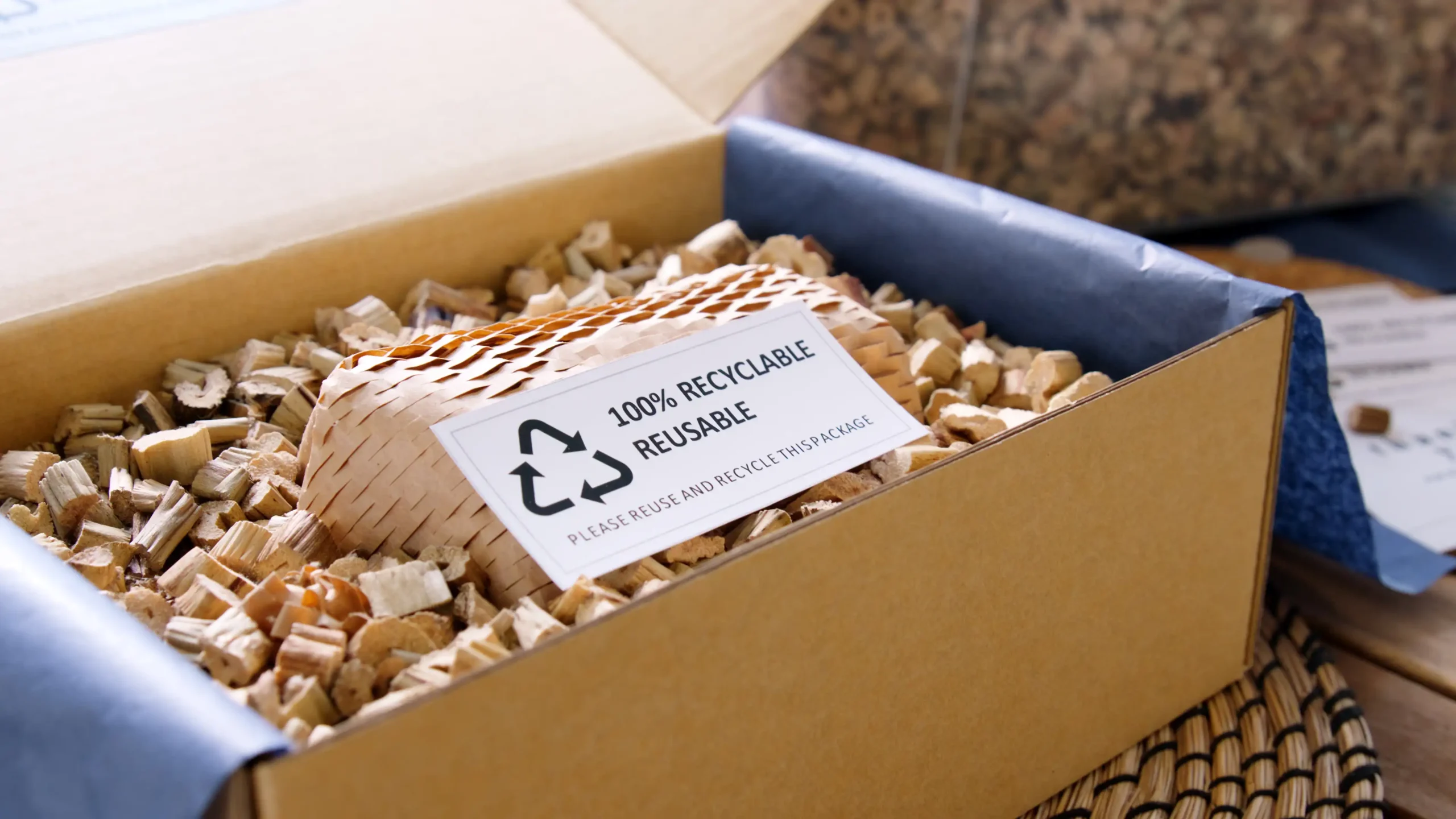Extended Producer Responsibility (EPR) regulations are transforming the landscape of packaging. With pushes towards global sustainability measures, companies must pay attention to how these laws affect their business. This often entails navigating complex reporting obligations, complying with budding legislation, and impacts to original designs and operations.
While these can be daunting tasks due to a limited amount of information, it is important to start somewhere. Below, we explore three common questions about EPR to help businesses understand and manage these regulations effectively and proactively.
Packaging EPR FAQs
1. What should my company be tracking to comply with packaging EPR regulations?
A key action your company should take is record-keeping. Businesses must maintain up-to-date detailed records of their packaging activities. These details include but are not limited to quantities produced, quantities sold in a region, materials used, additives, barriers, layer materials, embellishments, hazardous substances, and color.
Collecting these data points prepares your company for audits. Regulatory authorities may conduct audits to ensure compliance, so it is critical to have your data in line in order to provide documentation and demonstrate adherence to EPR requirements.
Compliance with packaging EPR regulations begins with understanding key requirements and ensuring accurate data collection. It is vital to be aware of EPR demands such as reporting obligations, fee structures, and documentation requirements. By staying organized and on top of these requirements and registering with relevant EPR schemes, you’ll have a better idea of what data needs to be collected.
2. How do packaging EPR regulations impact costs and operations?
Costs are among the top concerns for many companies when it comes to EPR compliance. It can be costly to comply, but also costly if you are non-compliant and pay the consequences.
One avoidable cost that many companies find themselves facing is the cost of annual data gathering. This includes manpower hours and takes employees away from their value-added tasks. Data is the foundation of your compliance success, so it is crucial to have a centralized data management system.
Costs of Non-Compliance
Another costly result comes about when your company chooses to not comply or doesn’t act quick enough with EPR legislation. These companies will acquire fees based on their compliance status on various laws. One common target is packaging material. EPR laws fine producers based on the amount of material used and the material type. The more material used and the less sustainable it is, the higher the fees.
Consumer distrust is another potential cost. If customers perceive that a company is either not sustainable or uses greenwashing tactics, they can very quickly turn their backs on a brand. Many consumers would choose a sustainable brand over a non-sustainable one, even if it means paying slightly more.
Costs and Operational Changes of Compliance
In many cases, companies will need to modify their packaging in order to meet standards set by EPR schemes. Of course, this process can be timely, costly, and may require innovations from multiple teams.
Redesigns are also costly in the way they impact supply chain and product distribution. When altering a product’s packaging, companies must think about the impacts it has on a product’s shelf-life, storage of the product and packaging, transportation changes due to weight and size, and product handling.
While redesigning or altering packaging in order to comply with EPR can be a hassle, starting this process now can have more long-term benefits than absorbing non-compliance fees. Taking an improved, more sustainable approach can better your brand reputation, result in increased innovation, and save resources in the long run.
3. What are the best practices for complying with packaging EPR regulations and avoiding fees?
The main goal of packaging EPR laws is for businesses to minimize their packaging waste and improve recycling rates. If businesses work towards these goals, they can reduce the amount of fees they pay. Three strategies to achieve this are to use more sustainable materials, optimize package design, and utilize take-back recycling programs and recycling partners to enhance environmental performance.
Sustainable Packaging Materials
Some ways companies can be more sustainable in their packaging is by increasing the amount of recycled materials in their packaging, switching to renewable materials where possible, and implementing innovative alternatives such as plant based materials. A helpful resource is The Recycling Partnership’s free recyclability tool which scores your package’s recyclability based on factors like size, material, consumer access to recycling infrastructure, and more, allowing you to gauge your package’s recycling performance.
Optimizing Your Packaging Design
There are a couple ways to optimize your package designs. This is important because the less material that ends up needing disposal, the lower your EPR fees.
- Right-Sizing: Designing your packaging to precisely fit the product minimizes excess material used, shaving off excess weight and reducing the overall volume of the packaging. This allows you to get more product on a pallet and save on transportation costs.
- Modular Packaging: This method takes a “design for recyclability” approach, as it aims to create packaging that can be easily disassembled for recycling or reuse. This method is innovative, sustainable, and can be multifunctional which is exciting to the customer.
- Lightweighting: By reducing the weight of packaging as much as possible (without compromising its function and protection), you can unlock lower transportation costs due to decreased weight, and reduce carbon emissions due to lighter truckloads.
Utilize Take Back Programs
Take-back recycling programs are when manufacturers or retailers take back used products of materials after consumers are finished with them and reuse them in the manufacturing cycle. These programs are great when it comes to complying with EPR since they promote a circular economy and keep material waste low. Oftentimes these programs make it easy for customers to recycle, providing a win-win situation for everyone.
Cisco is one company that has been successful with take back programs. They allow customers to return products that have reached the end of their life at no extra cost. Through this program, Cisco has reduced their product waste, started a sustainability movement, and is appealing towards customers as they know they are supporting a brand that cares about the environment.
How Specright Can Help
Complying with packaging EPR regulations can be daunting, but Specright has many tools that can help prepare you for these regulations, making it as easy as possible to be compliant.
A Centralized Data System
Specright provides customers with one centralized, up-to-date system where all data lives. By “owning” your data in Specright, every datapoint is at the tip of your fingers, ridding the need to go back and request data from suppliers and manufacturers every year during reporting season.
Specright provides complete visibility into your data through helpful reports and dashboards that provide real-time project statuses and visibility into non-compliant packaging components. The ability to filter through specifications is also an extremely helpful tool when it comes to EPR compliance, as you can audit your own products to see which specifications can be optimized. Finding the heaviest contributors and understanding what materials are being used can be useful to kickstart your redesign projects
By having all your data collected in one place, understanding sustainability data becomes simple and makes reporting exponentially easier.
Key Integrations For EPR Compliance
Specright offers many integrations, but three in particular are exceptionally helpful when looking at packaging EPR compliance: Lorax EPI, COMPASS, and TOPS.
Lorax EPI is crucial when it comes to EPR reporting, as they are the leading cloud solution for Extended Producer Responsibility (EPR) and Product Stewardship Compliance. With this partnership, Specright can ensure that companies are capturing the necessary specification data for packaging EPR and tax reporting, then seamlessly send that data to Lorax to create accurate, fast reports.
Another key integration Specright has is with Trayak’s COMPASS, a tool that gives users insights into the environmental impact of their package designs through Life Cycle Assessments (LCAs). Customers can simply push data from Specright to COMPASS and run an LCA with a click of a button, rather than needing to sift through spreadsheets and documents to pull that information together. Running LCAs allows users to better analyze and understand their packaging sustainability at any given time, identify areas for improvement, and measure progress over time.
Lastly, Specright’s TOPS integration allows users to optimize their palletization. It automatically transfers data from Specright to do an analysis, then assigns the designs and files to the correct packaging specification. TOPS optimizes palletization, which reduces waste, material usage, and margin of error, which are all key factors of EPR.
Specright can help tackle these common questions about EPR and any more you may have through its robust Specification Data Management Platform. Don’t wait until it’s too late to get ahold of your compliance data; request a demo of Specright and we can help you get started.
Explore More Blogs
Get Started
With Specright’s Solution Suite, you can digitize, centralize, and link your specification data to drive efficiencies, intelligence, traceability, and collaboration within your organization and across your supply chain network.




